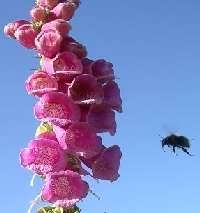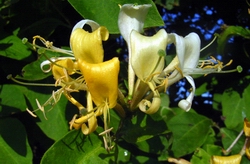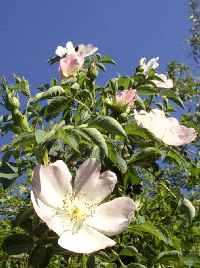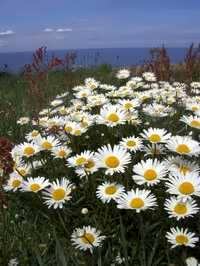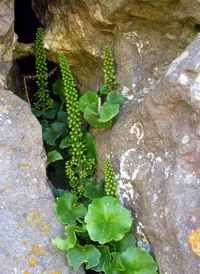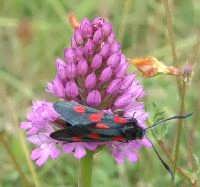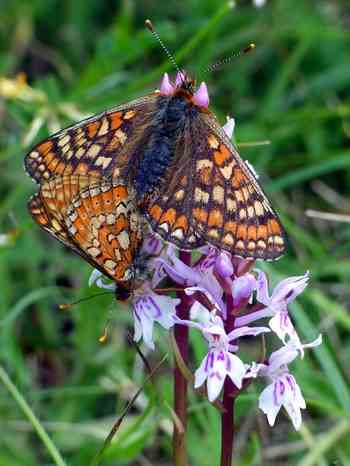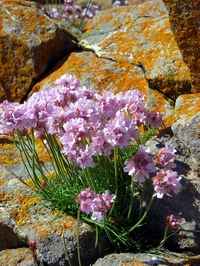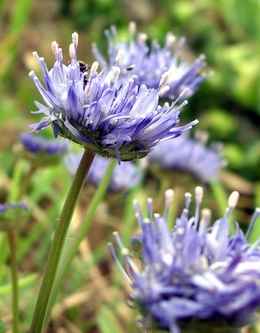When to Watch Wildlife |
J | F | M | A | M | J | J | A | S | O | N | D | Search |
Current wildlife highlights |
||
|
What's new on this site |
||
|
Wildlife calendar |
||
|
Plants and Animals |
||
|
Habitats |
||
|
Wildlife sites |
||
|
WWW links |
||
|
Guide Books |
||
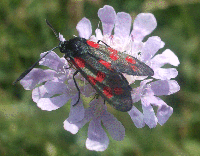 |
||
|
© PMcS 2006 |
|
June |
||||||||||||||||||||||||||||||
|
||||||||||||||||||||||||||||||
This month look
out for:
|
||||||||||||||||||||||||||||||
In June summer
is in full swing, with mid-summer officially heralded on the 21st of
this month. The countryside is lush and the hedgerows, meadows and
woodlands are bursting with growth. Trees are now all fully in
leaf. Most have started to lose their spring freshness by the end
of May, with the bright green exchanged for a darker and mellower hue.
The hawthorn blossom starts to fade, but the elder blooms
light up the roadsides with their big disks of creamy pungent flowers.
The light pink of the wild dog roses and the honeysuckle
pepper the hedgerows along with the flowers of the bramble (blackberry),
the meadow crane's-bills and the first flowering of the
foxgloves, but only where the soil is acidic. As the
summer progresses the open flowers climb the stem of this biennial until
only a few remain at the top of a tall spike.
In the more open grasslands ox-eye daisy provide wonderful shows, mixed in with vetches such as the yellow bird's foot trefoil. Where walls line field boundaries herb robert shows of a cloud of small pink flowers (don't put one in your button hole as this brings on rain), wall pennywort clings to the walls with round fleshy leaves and an unusual single flower spike and the introduced biting stonecrop (this plant tastes bitter) pushes up a mat of attractive bright yellow flowers next to the elegant pink bindweed. As the cow parsley flowers now fade and set seed, the less delicate hogweed and the tall upright hedge-parsley now take its place. The birds are singing less now as the breeding season is in full swing and their preoccupation is finding enough food to satisfy their nestlings. Young birds can be seen relentlessly demanding food from the worn out adults. The dowdy young starlings are calamitous in their pursuit of their more iridescent parents, and stomp around with indignant squawking.
The limestone grasslands of northern England and the chalk downlands of the south come into their own in June. Orchids, such as bee, common spotted, fragrant, and in the longer grass pyramidal, spring up. The nights are now warm and bats, badgers and moths are at the
height of activity and are worth a special night sortie to watch. |
||||||||||||||||||||||||||||||
|
Woodlands
(including wood pasture): In the woodland the canopy is closing over
and darkness descends once more. The woodland flora has already
seized its chance to flower and now turns to seed production. |
||||||||||||||||||||||||||||||
| Arable and hedgerows: see introduction | ||||||||||||||||||||||||||||||
|
Road verges: see introduction |
||||||||||||||||||||||||||||||
|
Chalk and limestone grasslands: These grasslands are perhaps
amongst the most precious wildlife assets that Britain possesses.
The huge diversity of plant and insect species that they support are
second to none in diversity. June sees the flowering of lesser
butterfly orchid, fly orchid, horseshoe vetch,
small scabious, Cheddar pink, betony,
tuberousthistle, clustered bellflower, bell
flower, burnet saxifrage, meadow saxifrage,
restharrow along with continued flowering of species such as
bird's foot-trefoil, rockrose, salad burnet,
fairyflax, common milkwort, bee orchid,
commongentian, horse-shoe vetch,
squinancywort, marjoram and, oxeye daisy. The length of the grass determines, in many cases, which butterfly species are able to breed. If the grass is long meadow brown and marbled white can be abundant. Whereas the family of blue butterflies can only tolerate short (in some cases very short) tufty grass. In May and June the fritillaries are also in flight. The marsh-fritillary's caterpillars feed on devil's-bit scabious which is a species of grasslands, wet hollows or shady woodland edges and meadows.
|
||||||||||||||||||||||||||||||
Meadows (neutral) and flood plain grasslands: The hay is often cut as early as mid June. Therefore to see the diversity of flowers tradition meadow you need to be quick off the mark. |
||||||||||||||||||||||||||||||
|
Acidic grasslands:
details to follow |
||||||||||||||||||||||||||||||
|
Heathlands: Heathlands
are now worth a visit for their bird and amphibian species, but perhaps
more for their damsel flies and dragon flies where there is standing
water. |
||||||||||||||||||||||||||||||
|
Mountain
and Moorlands (uplands): details to follow |
||||||||||||||||||||||||||||||
|
Rivers and ponds
(including bogs and mires): The fringe vegetation around lakes and
rivers is now tall. Flag irises, surely the most graceful
of the group, fleck the wetland fringes with bright yellow flowers.
Gypsywort, watermint, water forget-me-not and
brooklime are all attractive small plants that can be found in the
wet edges. As insects swarm above steams
and rivers, trout rise up out of the water as they attempt to
catch a meal, then fall back in with a big slopping noise. |
||||||||||||||||||||||||||||||
Sea and the sea
shore (including estuaries): By June cliff tops can provide a riot
of colour if not overgrazed or trampled by walkers. A specialist
of such habitats are thrift and sheep's-bit with their
bobbles of flowers growing from a tight mats of green leaves.
These grow amongst grasses and vetches but sometimes thrift
particularly appears to be the one most capable of finding the tiniest
ledge to perch upon.
On the shore, above the reach of the sea, salt tolerant plants such as the edible sea beet, the white flowered sea campion, yellow horned poppy and sea plantain can be found surviving, even in this inhospitable environment. Many sea birds are still at their nests with eggs and young. There are a number of special places where you are sure to be able to experience the frenzied clamour of sea bird colonies, and these are a real speciality of June. For more information go to the sea bird page. Coastal visits are a chance to investigate rock
pools when the tide is out. These are often enjoyed to the
accompiment of piping oystercatchers and whistling rock pipits. |
||||||||||||||||||||||||||||||
|
Mammals: details to follow |
||||||||||||||||||||||||||||||
| Birds:
The birds of farmland are worth seeking out One particular
favourite is the canary like yellowhammer with its
"a-little-bit-of-bread-and no-cheese" song from a hedgerow perch.
Also the more dowdy corn bunting proclaims its territory with a
song like the jangle of a bunch of keys. Linnets,
goldfinches and greenfinches all add to the June sounds with
their twittering and rasping songs. These residents are augmented by
summer visitors such as whitethroats and other warblers. House martins are busy catching insects on the wing to feed their young in the large cup-like mud nests under the eves of houses. They can be easily distinguished from swifts by their white bellies and stubbier bodies. Swallows find easy pickings skirting low over
pastures and meadows. When the clouds are dark and low the flies
are forced to fly low |
||||||||||||||||||||||||||||||
|
Amphibians & Reptiles: details to follow |
||||||||||||||||||||||||||||||
|
Insects: A walk along the
banks of a healthy stream or river may well result in a flurry of wings
of the beautiful demoiselles and banded
demoiselles, as they take to the air. These damselflies emerge
in early June, and will normally fly on and soon settle once again on
another leaf. By mid June all damselfly species will have emerged
as adults. The mayfly species will still
be around early in June and are joined by a myriad of other flying
insects. |
||||||||||||||||||||||||||||||
|
Plants:
June is a great month to see flowers. The warm weather induces a
massive increase in the diversity of flowering plants. Many orchid
species flower this month. Woodland flowers are the exception to
this profusion, but visit cliffs, sand dunes permanent pastures, rivers,
meadows (before they are cut), wetlands and even old quarries and you
can't fail to find something to delight. |
||||||||||||||||||||||||||||||
|
Fungi: |
||||||||||||||||||||||||||||||
|
|
||||||||||||||||||||||||||||||
All images and text are copyright PMcS 2006
